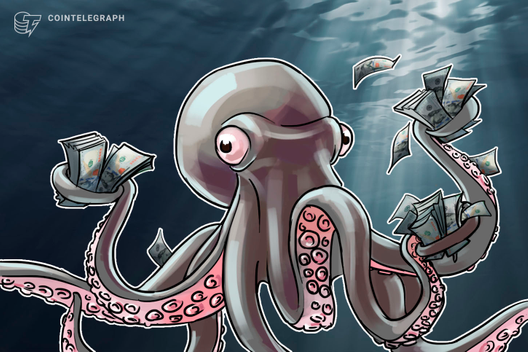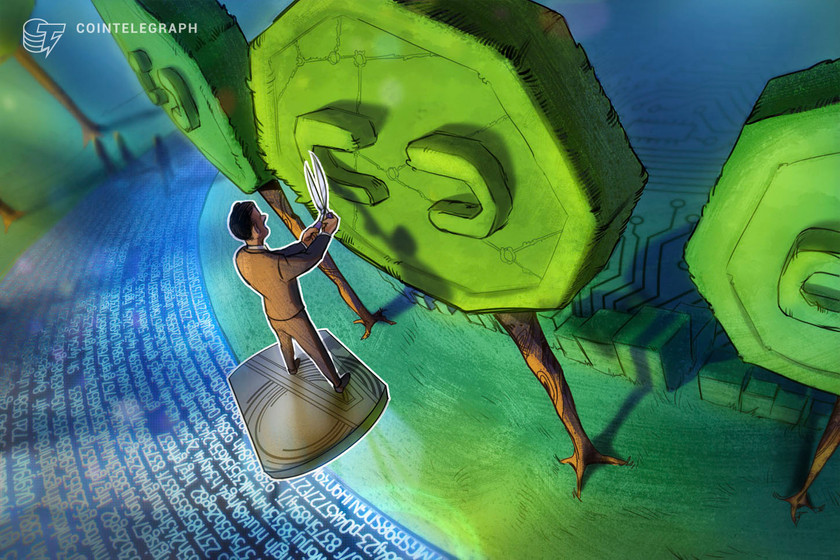How NFTs and the Metaverse can keep fashion luxurious
It’s no secret that the fashion industry has started to explore the cryptoverse, with brands like Dolce & Gabbana, Gucci, Philipp Plein and Tiffany & Co. taking their own path down the metaverse runway.
Decentraland’s Metaverse Fashion Week hinted at a new wave of fashion, while Philipp Plein brought the metaverse and nonfungible tokens (NFTs) right into his London shop. The innovative technology mixed with the ever-changing fashion world was an inevitable pair, but there is always room for more.
Even during its inception, the promise of the metaverse has convinced people to pay millions for land in the virtual worlds — so, why not fashion? The fashion industry is always looking for new ways to innovate and create new traditions.
While the metaverse removes the tangible aspect that captivates many in the fashion industry, it is a new way to experience wearing and using beautiful pieces digitally on a personal avatar. Lokesh Rao, CEO of Trace Network Labs, previously told Cointelegraph that “a digital avatar can wear any garment without any constraints of type, design, fabric and use.”
As many know, however, the fashion industry remains one of the most exclusive industries in the world. With Chanel’s bag quota or purchase criteria and the long waiting list to get a Hermès Birkin or Kelly, a lot of the influence in the fashion industry comes from exclusivity, price, outfits and, in many cases, who one knows.
And as many fashion enthusiasts understand, there is nothing like opening the box of a long-coveted piece and holding, wearing and loving it for the first time. The idea of luxury is a melange of both exclusivity and passion. Why should fashion in the metaverse be any different?
Keep and grow traditions
While prominent brands value their traditions, they should also evolve as time goes on. However, appealing to a new user base while keeping the existing ones entertained is not easy.
In a fight to keep customers and enthusiasts loyal to the brand, Indrė Viltrakytė, a fashion entrepreneur and the founder of Web3 fashion venture The Rebels, suggested they “co-create digital wearables with members of their community and sharing commercial rights/profits or royalties with them.”
In this case, Viltrakytė told Cointelegraph that digital collectibles could help showcase fashion enthusiasts’ interest in a brand. These would not only be available to influencers, or the lucky ones who are given PR packages for their large following and interest in a brand, but could be for everyone.
For example, Maison Margiela could offer a set amount of digital wearables when buying a pair of the Bianchetto Tabi Boot. The boots can be worn in the Metaverse and in real life for those diehard fans who do not necessarily have a following behind them.
Recent: The Caribbean is pioneering CBDCs with mixed results amid banking difficulties
Tiffany & Co. has already done something similar with their CryptoPunk NFT collection NFTiff, a collection of CryptoPunk-inspired NFTs that are “exclusive to CryptoPunk holders.”
We’re taking NFTs to the next level. Exclusive to CryptoPunks holders, NFTiff transforms your NFT into a bespoke pendant handcrafted by Tiffany & Co. artisans. You’ll also receive an additional NFT version of the pendant. Learn more: https://t.co/FJwCAxw8TN #NFTiff #TiffanyAndCo pic.twitter.com/pyKlWejHv4
— Tiffany & Co. (@TiffanyAndCo) July 31, 2022
For 30 Ether (ETH), CryptoPunk holders can secure a physical version of their favorite and probably most expensive NFT to be worn as a status symbol. This is something that would not be exclusive to those with influence and can carry online into the new era of Tiffany’s little blue box, an iconic emblem of the brand.
Digital fashion items are nonfungible
NFTs, according to the Ethereum Foundation, are “tokens that we can use to represent ownership of unique items.” They are not able to be modified or deleted once minted, and “digital assets never deteriorate,” said Viltrakytė.
Unfortunately, many assets in the fashion industry, such as the aforementioned Birkin, which has “outperformed the S&P 500 over 35 years,” according to Finty, can be stolen, destroyed or worn down over time without proper care. This is where digital assets rise above because, “like some ultra-exclusive, non-tangible experiences currently available, not everything expensive needs to be ‘touched’ to have value,” Viltrakytė noted.
Plus, outside of collectors and caretakers, it is almost impossible for an enthusiast to get their hands on an archive piece, especially if preservation could be a problem. Sometimes, brands will showcase their archive in cities like Paris or Milan for a limited time, but in many cases, it is a private affair owned by private people. However, one way that brands can utilize this exclusivity of a non-deteriorating asset is through NFTs and blockchain-based NFT museums.
Viltrakytė said, “If an NFT gives you direct access to Chanel archives or the creative director of Hermès, it signifies the special status you can have or even upgrade with time.” The NFT will never expire, and there will always be a way to create a luxurious and exclusive experience.
Another way, she suggested, is to create something like a fashion bond, where after some point, the NFT can be exchanged for a luxury item. “For example, if you are a Hermès client and would like to purchase a deed for your daughter to redeem it for a one-of-a-kind bag on her 18th birthday, you can do it seamlessly as an NFT,” she said, adding:
“Paper certificates burn; servers crash and lose data; but blockchain does not lie, and a nonfungible token like that would be 100x more liquid, verifiable and longer-lasting than any traditional document.”
Embrace e-commerce and the technology
As exciting as it is to go to the shop and try on, feel, walk around and experience the shop and its clothes, e-commerce is already on its way to becoming the main way to shop. The metaverse can help make it as luxurious and modern as traveling to Paris to buy a beloved Kelly. A new and creative approach is necessary because, as Viltrakytė said, “now, post-covid, 99.99% of brands are selling online, including Hermès.” Brands need to embrace what technology can do for their image and customers.
Viltrakytė believes that the industry is in the experimental phase of Web3 and virtual reality to see how they really affect the fashion industry, as “we don’t have solutions capable of making a digital garment ‘fit.’ When we have a ‘good enough’ depth sensors in our smartphones’ front camera and AR technology that can ‘fit’ any item perfectly on anyone, it will be the true start of the digital wearables era.”
According to Vogue Business, a Los Angeles modeling agency, Photogenics, has already experimented with this type of technology by creating “avatars via 3D scans of models’ faces, while their bodies were rendered from scratch.” The models and their avatars, personalized to the model’s preference of reality or creativity, are available for use in the metaverse as virtual models.
Recent: Are decentralized digital identities the future or just a niche use case?
Digital wearables can also shape who we are online. If one decides to move into the metaverse for various reasons, an identity there is as important as it is in real life. In fashion, people use details to express themselves, adding their own embroidery to pieces and customizing it to represent their personality. This concept will be just as important online as it is offline, as Viltrakytė suggested:
“The virtual presence can be an extension of one’s physical self and personality, or it can be something completely different from who a person is in real life. I think we’ll be seeing a mixture of those two concepts.”
The simple fact is that the technology is not there yet. But as the fashion industry has proven time and time again, “our creativity shows how we can leverage all of this potential in the fashion industry.”









